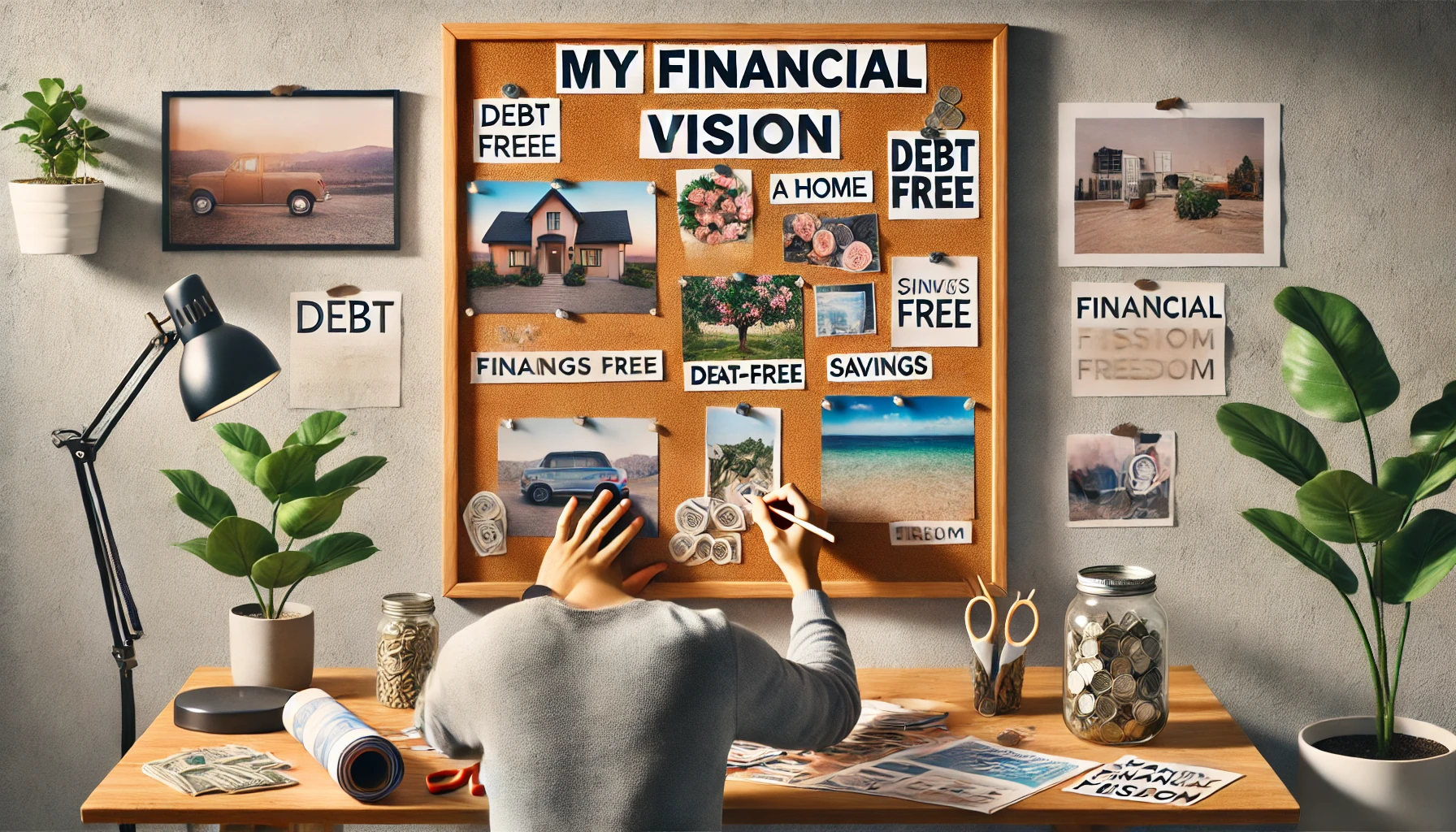Setting financial goals is great. But sometimes, writing down numbers isn’t enough to stay motivated. That’s where a financial vision board comes in.
A vision board is a visual tool that helps you stay focused on what you’re working toward. When done right, it can transform your mindset and keep your money goals front and center—literally.
In this article, you’ll learn how to create a financial vision board that’s powerful, personal, and effective.
What Is a Financial Vision Board?
A financial vision board is a visual representation of your financial goals and dreams. It includes:
- Images
- Words or affirmations
- Numbers or charts
- Quotes or goals
It’s a creative way to remind yourself why you’re saving, budgeting, or paying off debt.
If your budget is the plan, your vision board is the motivation.
Why Vision Boards Work
Vision boards help you:
- Visualize your goals clearly
- Stay emotionally connected to your “why”
- Boost motivation when things get tough
- Rewire your mindset from scarcity to abundance
They’re not magic—but they can be a powerful part of your financial strategy.
Step 1: Define Your Financial Goals
Before building your board, be clear about what you want.
Ask yourself:
- What do I want to achieve financially this year?
- What are my long-term money dreams?
- What kind of lifestyle am I working toward?
Examples:
- Save $5,000 for an emergency fund
- Become debt-free
- Buy your first home
- Travel to a dream destination
- Start a business
- Retire early
Write your answers down—they’ll guide your board.
Step 2: Gather Visuals That Inspire You
Look for images and words that represent your goals.
Sources:
- Magazine cutouts
- Printed photos from the internet
- Stickers or illustrations
- Personal pictures
- Pinterest or Canva
Choose visuals that feel exciting, not just realistic.
Step 3: Choose a Board Format
You can go physical or digital—whatever suits your style.
Physical Board:
- Corkboard, poster board, or a notebook page
- Use tape, glue, pins, or clips
Digital Board:
- Canva, Pinterest, or a phone wallpaper
- Use image collages or slides
Just make sure it’s something you’ll see often.
Step 4: Add Words, Affirmations, and Numbers
Enhance your visuals with written motivation.
Include:
- Powerful phrases (“Debt-Free Life”, “Financial Freedom”, “Dream Trip 2025”)
- Specific amounts (“Save $10,000”, “Pay off $3,500 credit card”)
- Affirmations (“I am in control of my finances”)
Words add energy and clarity to your goals.
Step 5: Place It Where You’ll See It
Visibility = power.
Put your board:
- Above your desk
- Inside your closet door
- On your phone lock screen
- On your fridge or mirror
The more you see it, the more you stay focused.
Step 6: Review and Refresh Regularly
Your goals may grow or change—and that’s okay.
- Update your board every few months
- Replace goals you’ve achieved
- Add new dreams as you evolve
This keeps the board alive and aligned with your journey.
Step 7: Take Action (Every Week)
A vision board is inspiring—but action makes it real.
Each week, ask:
- What small step can I take toward this vision?
- What habit needs support?
- What expense can I skip to stay on track?
Align your actions with your vision, and the results will follow.
Final Thoughts: Your Future Deserves to Be Seen
A financial vision board helps you keep your dreams visible, emotional, and real. It’s not just about money—it’s about the life you’re building, the freedom you want, and the confidence you’re creating along the way.
Don’t wait to feel “ready” or perfect. Start with what you have. Build a vision. Then build the life to match.
